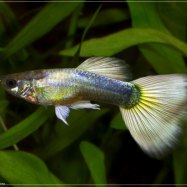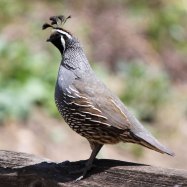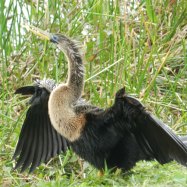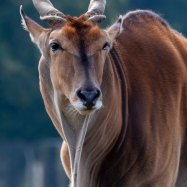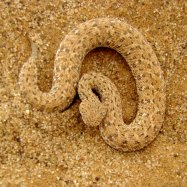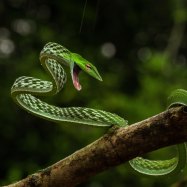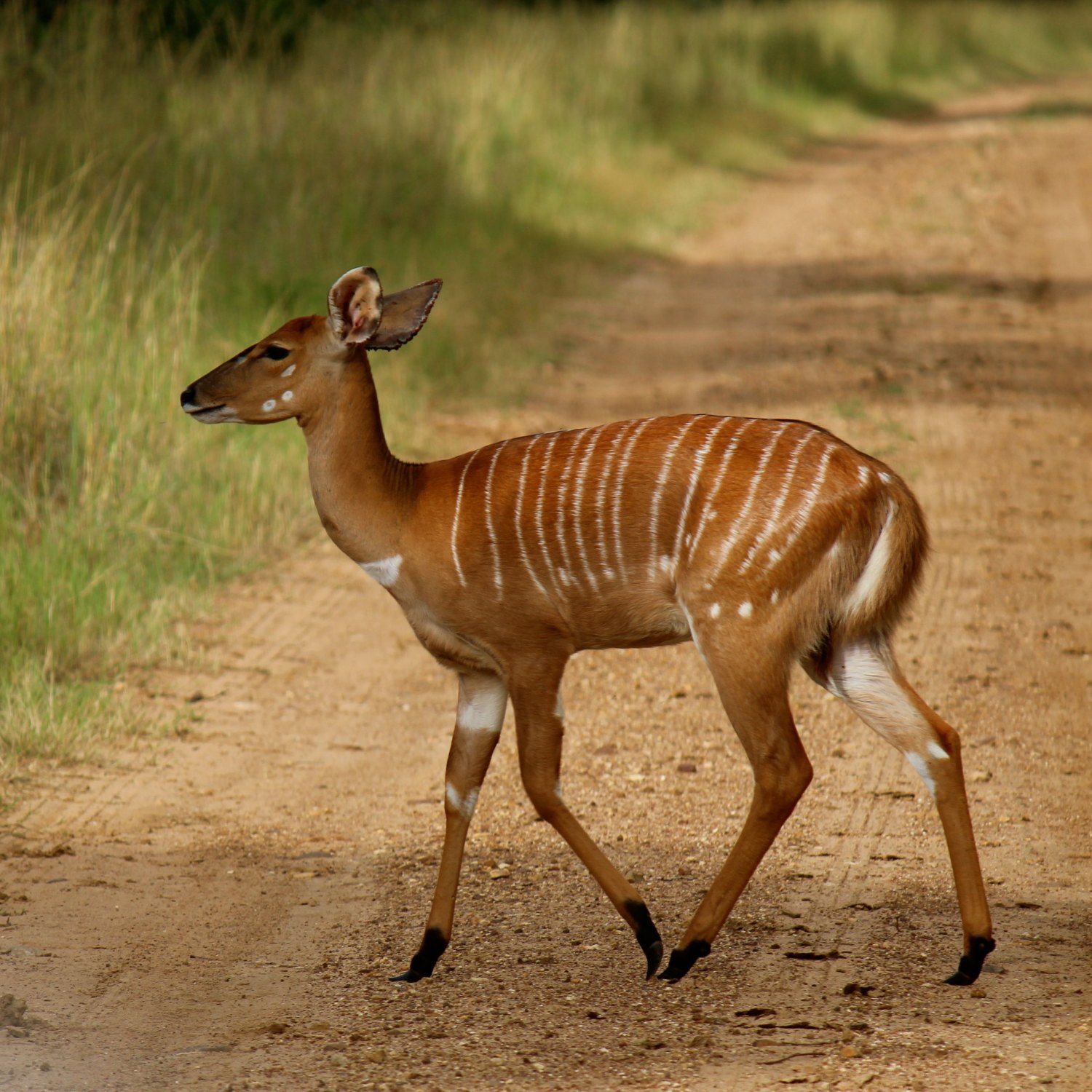
Nyala
Female: 135-195 cm, Male: 135-195 cm
Nyala is a beautiful and graceful medium-sized antelope found in the eastern and southern regions of Africa. Females and males have a similar length of 135-195 cm and belong to the Bovidae family. These stunning animals are easily recognizable by their distinct spiral horns. #Nyala #Antelope #AfricanWildlife
Animal Details Summary:
Common Name: Nyala
Kingdom: Animalia
Habitat: Woodlands and savannas
The Enchanting Nyala: A Rare Beauty of Eastern and Southern Africa
When it comes to the diverse world of African wildlife, there is one animal that stands out with its unique beauty and elusive nature - the Nyala. This medium-sized antelope, known scientifically as Tragelaphus angasii, is found in the woodlands and savannas of Eastern and Southern Africa, specifically in the countries of South Africa and Mozambique. With its striking physical features and fascinating behavior, the Nyala is a creature worth getting to know.Discovering the Nyala
The Nyala belongs to the kingdom Animalia, the phylum Chordata, and the class Mammalia Nyala. It is a member of the order Artiodactyla, which consists of even-toed hoofed mammals, and the family Bovidae, which includes antelopes, gazelles, and goats. With such a diverse group of relatives, the Nyala has inherited a few outstanding features that make it stand out among other species.One of the most striking features of the Nyala is its unique coloration. While the males have a dark brown coat with white vertical stripes, the females have a reddish-brown coat with the same white stripes. This coloration serves as a natural camouflage in their woodland and savannah habitats. The stripes help them blend in with the surrounding vertical vegetation, making it difficult for predators to spot them.
Another notable feature of the Nyala is its body shape. This medium-sized antelope has a long, slender body with slender legs, making it an excellent runner. Its long neck and uniquely shaped head, which includes long, pointed ears and a bushy white-tipped tail, give it an elegant and regal appearance No See Ums.
A Herbivore's Lifestyle
As a herbivore, the Nyala's diet primarily consists of leaves, fruits, and buds. They are known to feed on a variety of plants, including acacia, thorn trees, and grasses. While they prefer to graze during the day, they are more active during the early mornings and late afternoons, avoiding the heat of the day. This is a necessary survival tactic, as they live in areas that can reach high temperatures during the day.One of the most intriguing aspects of the Nyala's feeding behavior is its ability to browse. Unlike other antelopes, the Nyala can stand on its hind legs to reach high branches and leaves. This unique adaptation allows them to access food that other herbivores cannot, giving them an advantage in finding sources of nourishment.
The Elusive Nyala
Despite its distinct physical features, the Nyala is a relatively shy and elusive animal. They are solitary creatures, only coming together during the breeding season. This behavior makes them challenging to spot in their natural habitat, and they often remain hidden in the dense vegetation.The Nyala's elusive nature has made it challenging for researchers to gather information about their population and behavior. However, conservation efforts are currently in place to monitor and protect their numbers in both South Africa and Mozambique. The Nyala's habitat is also being closely monitored to ensure their survival and the protection of their natural environment.
A Limited Distribution
The Nyala's geographical distribution is limited to Southern Africa, specifically the regions of South Africa and Mozambique. In these regions, they can be found in woodlands, forests, and savannas with dense vegetation. Small populations have also been introduced in other countries, such as Namibia and Zimbabwe, but their numbers remain relatively low.One of the reasons for the Nyala's limited distribution is their specific habitat requirements. They thrive in areas with dense vegetation, as it provides them with both food and cover. Any changes or disturbances in their habitat, such as deforestation or bush fires, can have a severe impact on their population.
The Nyala in Culture and Mythology
As one of the most beautiful creatures of the African wilderness, the Nyala has been featured in various cultures and mythologies. In Zulu culture, the Nyala is viewed as a symbol of wealth and power and is often used in traditional rituals and ceremonies. In some areas, the Nyala is also considered to be a sacred animal, and hunting or killing one is believed to bring bad luck.In ancient Egyptian mythology, the Nyala is associated with the goddess Hathor, who is often depicted with the horns of an antelope. The Egyptian pharaohs also prized the Nyala's horns, using them to create ceremonial headdresses and other decorative items.
A Call for Protection
Despite being a relatively unknown and elusive animal, the Nyala faces several threats to its population and habitat. Habitat destruction and fragmentation, caused by human activities such as land development and agriculture, are major concerns for the Nyala. They are also hunted for their meat and horns, which are believed to have medicinal properties in some cultures.It is essential to continue monitoring the Nyala's population and protect its habitat to ensure its survival. Conservation efforts, such as habitat restoration and protection, are crucial in maintaining a healthy population of these stunning animals. This is especially important as the Nyala serves as an indicator of the overall health of their ecosystem, and their presence has a vital role in maintaining a balance between predators and prey in their habitat.
The Charm of the Nyala
The Nyala is a fascinating and enchanting animal that often goes unnoticed in the vast and diverse African wilderness. Its unique coloration, elusive nature, and specific habitat requirements make it a rare beauty that is worth preserving and protecting. As we continue to learn more about this elusive creature, we can appreciate the charm and wonder of the Nyala and the role it plays in the delicate balance of nature in Eastern and Southern Africa.

Nyala
Animal Details Nyala - Scientific Name: Tragelaphus angasii
- Category: Animals N
- Scientific Name: Tragelaphus angasii
- Common Name: Nyala
- Kingdom: Animalia
- Phylum: Chordata
- Class: Mammalia
- Order: Artiodactyla
- Family: Bovidae
- Habitat: Woodlands and savannas
- Feeding Method: Herbivore
- Geographical Distribution: Southern Africa
- Country of Origin: South Africa and Mozambique
- Location: Eastern and Southern Africa
- Animal Coloration: Females: reddish-brown with white vertical stripes, Males: dark brown with white vertical stripes
- Body Shape: Medium-sized antelope
- Length: Female: 135-195 cm, Male: 135-195 cm
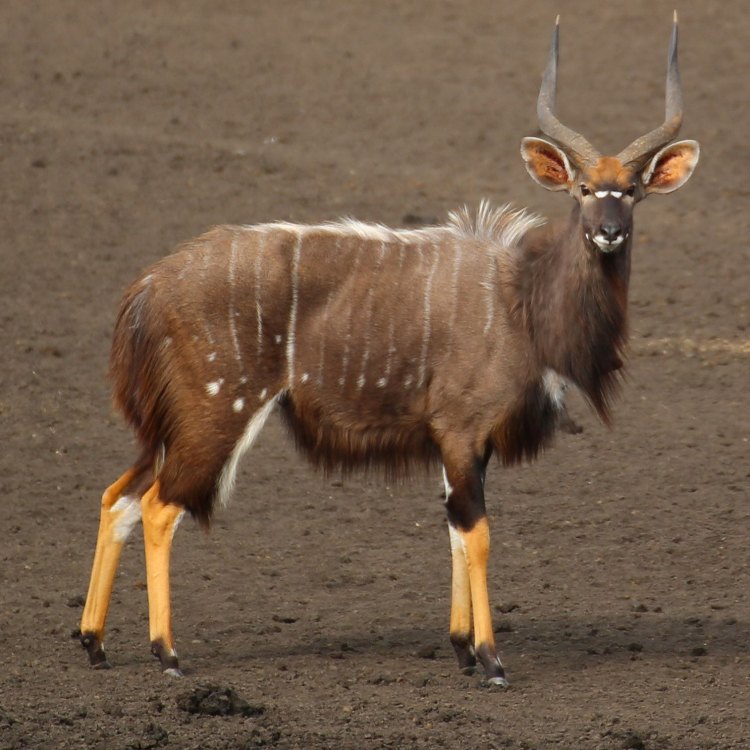
Nyala
- Adult Size: Shoulder height: Female: 100-110 cm, Male: 120-135 cm
- Average Lifespan: 10-15 years
- Reproduction: Viviparous
- Reproductive Behavior: Polygynous
- Sound or Call: Baah sound
- Migration Pattern: Non-migratory
- Social Groups: Generally solitary or live in small groups
- Behavior: Shy and elusive, active during early morning and late afternoon
- Threats: Habitat loss, hunting
- Conservation Status: Least Concern
- Impact on Ecosystem: Contribution to ecosystem balance through herbivory
- Human Use: Hunting, ecotourism
- Distinctive Features: Spiral-shaped horns, vertical white stripes on the body
- Interesting Facts: Nyala are sexually dimorphic, with males being larger and having horns
- Predator: Lions, leopards, hyenas
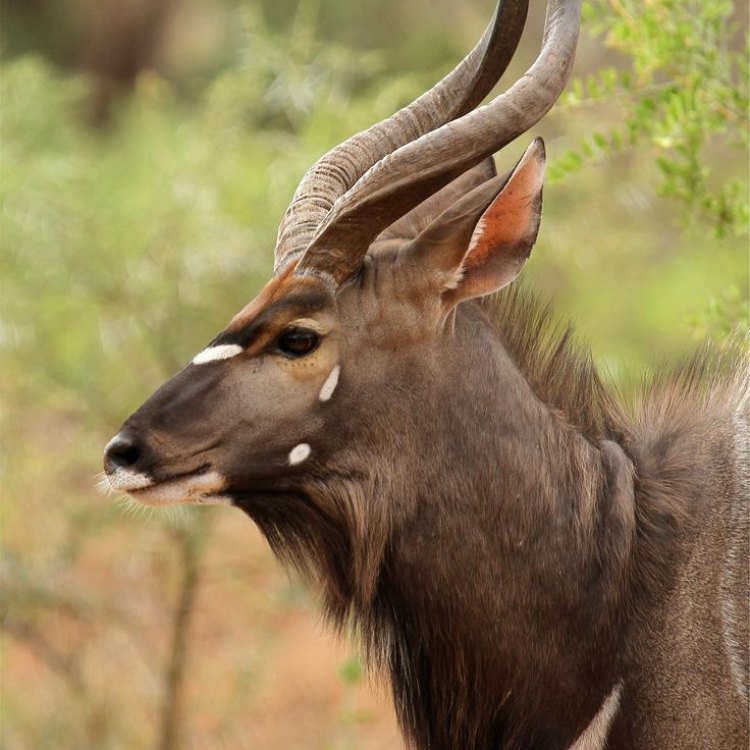
Tragelaphus angasii
The Mysterious Nyala: A Shy But Fascinating Antelope Species
In the vast wilderness of Africa, there is a beautiful and elusive creature that roams the grasslands and woodlands of South Africa, Mozambique, and Swaziland. With its striking vertical white stripes and spiral-shaped horns, the nyala stands out among other antelope species. But despite its distinctive appearance, this animal remains a mystery to many.Let's delve deeper into the world of nyala and discover the unique features and behaviors of this intriguing creature PeaceOfAnimals.Com.
Marvelous Adaptations of an Adult Nyala
Nyala belongs to the family Bovidae, which includes other antelope species, such as impalas and kudus. They are the third largest antelope in the Tragelaphus genus, with the only larger species being the bongo and the eland.An adult nyala can reach a shoulder height of 100-110 cm for females and 120-135 cm for males. They have a beautiful coat that varies in color from reddish-brown to gray. The most distinctive feature of a nyala is the white vertical stripes that run along its body, giving it a unique and eye-catching appearance.
Both males and females have these stripes, but the males have an additional white chevron between their eyes. However, the most notable difference between male and female nyala is their size and horns.
Males are significantly larger than females and have impressive spiral-shaped horns that can reach up to 80 cm in length. These horns are used for defense and territorial battles with other males Norwegian Forest. Females, on the other hand, have smaller and straight horns.
Where They Live and How They Behave
Nyala are native to South Africa, Mozambique, and Swaziland, where they inhabit a variety of habitats from dense woodlands to open grasslands. They are non-migratory animals, preferring to stay in one area as long as food and water are available.These creatures are generally shy and elusive, preferring to hide in thick vegetation during the day. They are most active during early morning and late afternoon, when they come out to graze on grass, leaves, and fruits. Their diet mainly consists of leaves and browse, making them important browsers in the ecosystem.
Nyala are usually solitary, but they can sometimes form small groups consisting of a male, a few females, and their young. However, they are not territorial and do not have a strict hierarchy within their social groups.
Reproduction and Courtship Behavior
Nyala are viviparous, meaning they give birth to live young rather than laying eggs. Mating usually occurs during the rainy season, between November and January. During this time, males compete for females by engaging in elaborate displays, such as zigzagging runs, head tossing, and vocalizations.Males are polygynous, meaning they mate with multiple females. After a gestation period of about 7 months, females give birth to a single calf, which they hide in dense vegetation for the first few weeks to protect it from predators.
The calves stay with their mothers for up to 18 months before becoming sexually mature. Nyala have a lifespan of 10-15 years, with their main predator being lions, leopards, and hyenas.
The Threats Faced by Nyala and Their Conservation Status
Nyala are currently listed as "Least Concern" on the International Union for Conservation of Nature (IUCN) Red List. Despite this, they face several threats, primarily due to human activities.The main threat to nyala is habitat loss due to human encroachment and agriculture. This loss of habitat not only affects the nyala but also disrupts the balance of the ecosystem, as they are essential herbivores.
Another threat to their survival is hunting, both for meat and for their impressive horns, which are considered a trophy by some. However, nyala are also hunted for ecotourism purposes, providing economic benefits to some countries.
To ensure the continued survival of nyala, conservation efforts are being implemented, including protected areas, anti-poaching measures, and habitat restoration. In some areas, ecotourism has also helped to increase awareness and protection of these beautiful creatures.
The Role of Nyala in Ecosystem Balance
As mentioned earlier, nyala play an essential role in the ecosystem as herbivores. They help to control vegetation growth, which in turn promotes a healthy balance within the ecosystem. Without nyala, there would be an overabundance of vegetation, negatively impacting other species.They also contribute to the food chain by providing food for their natural predators and scavengers such as vultures and hyenas. In this way, nyala are an essential part of the complex web of life in their native habitats.
Hunting and Human Use
Despite being a protected species, nyala are still hunted by humans for various reasons. In some areas, they are hunted for meat, which is considered a delicacy in some African cultures. The skin and horns of nyala are also used for traditional medicinal purposes. Additionally, nyala hunting is a popular sport for trophy hunting, especially among international hunters.On the other hand, humans also benefit from nyala through ecotourism. These magnificent animals attract tourists from all over the world, who come to observe and learn about their behavior and conservation efforts. The money generated from ecotourism helps to fund conservation efforts and promote the protection of nyala and their habitat.
Fascinating Facts about Nyala
1. Nyala are sexually dimorphic, meaning males and females have distinct physical differences.2. The word "nyala" comes from the Zulu word "inyaala," which means "antelope."
3. Nyala are one of the few antelope species that can detect ultraviolet light, which helps them to distinguish between different plants.
4. The "baah" sound made by nyala is used to communicate with other group members and is often heard during courtship rituals.
5. Young males, or "bulls," are often ousted from their maternal herd and form bachelor herds until they are old enough to form their own harems.
In Conclusion
Nyala may be a lesser-known antelope species, but they are no less fascinating than their more popular counterparts. With their striking appearance, unique behaviors, and important role in the ecosystem, they are a vital part of the African savanna.While they may face threats from human activities, efforts are being made to protect and preserve this beautiful species. As we continue to learn more about these magnificent creatures, we can also appreciate the delicate balance of nature, of which nyala are an integral part.
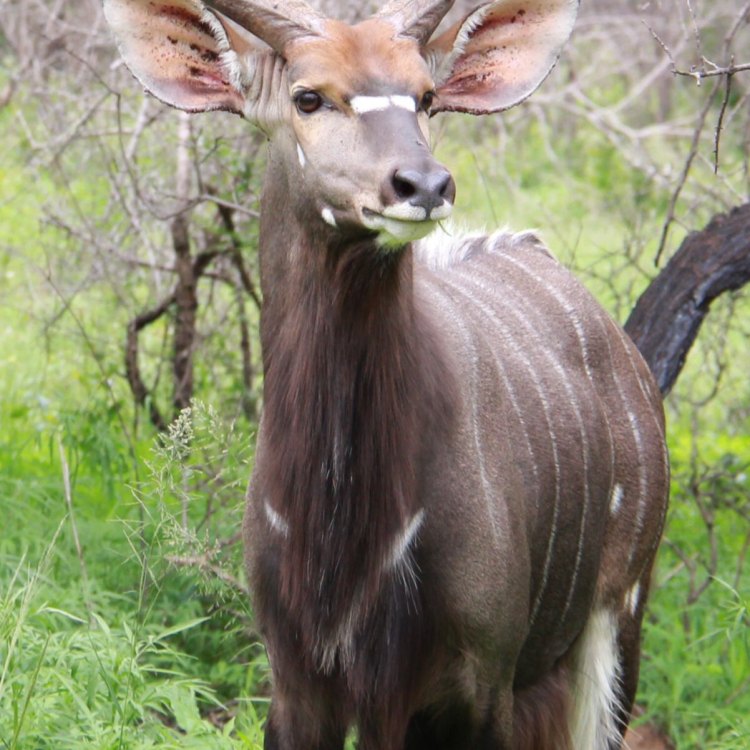
The Enchanting Nyala: A Rare Beauty of Eastern and Southern Africa
Disclaimer: The content provided is for informational purposes only. We cannot guarantee the accuracy of the information on this page 100%. All information provided here may change without prior notice.




